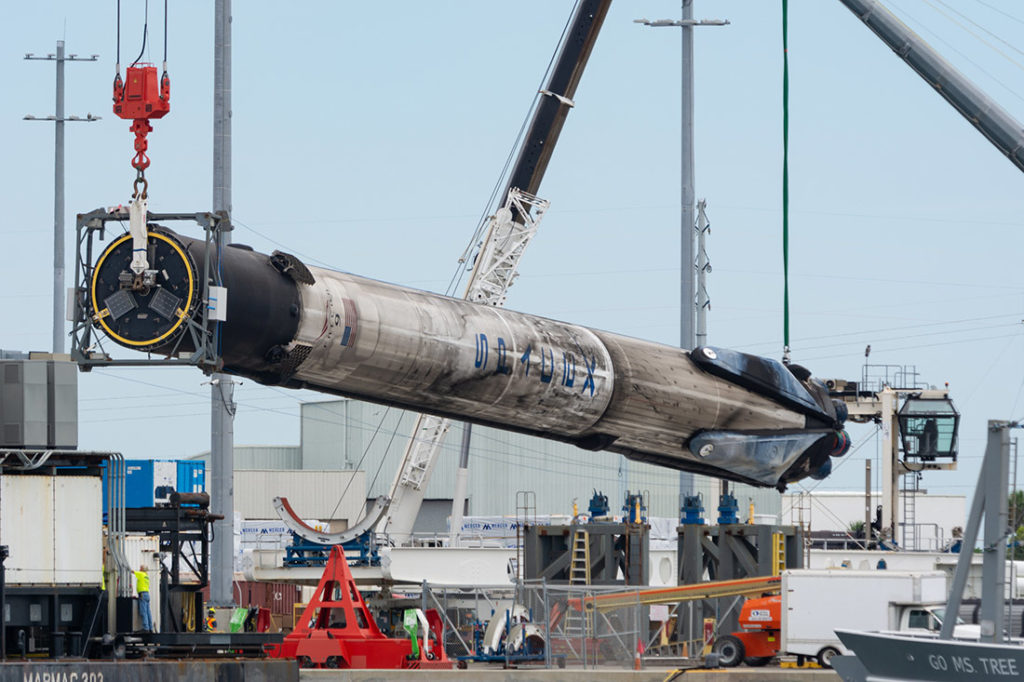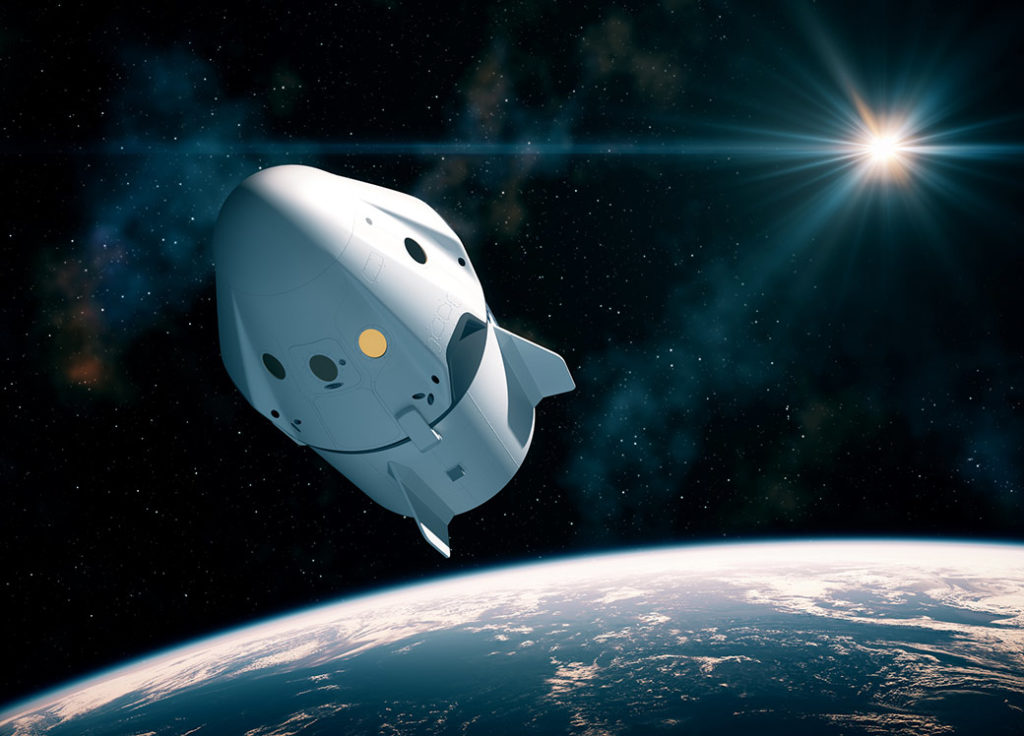What is the future of spaceflight? Will civilians travel freely into space and will have the opportunity to move to a different planet? With Elon Musk’s plans to build a city on Mars in 2050, everything is possible. But for now, the reality allows humans to see, or some to take a part in, different planet’s exploration. One of the rockets which make it possible is the Falcon 9.
The SpaceX Falcon 9 is a two-stage rocket that is partially reusable. Designed to move space exploration forward and allow cost-efficient transport of satellites. Additionally, it can send crew spacecraft into orbit. The latest version of the first stage Falcon 9 rocket can return to Earth and be flown again many times.
Evolution of the SpaceX Falcon 9 rocket
SpaceX headed by entrepreneur and billionaire Elon Musk began in 2002. The initial idea was to revolutionise aerospace and develop space travelling. The manufacturer and Musk started with Falcon 1. A rocket with a capacity of 670 kg. It was the first entirely liquid-fueled launch vehicle produced by a private company to reach Earth’s orbit. After three failed launches, Falcon 1 landed for the fifth and final time on July 14, 2009.
Then, the era of Falcon 9 began with its first flight on June 4, 2010, from Cape Canaveral, Florida. Already 2 years later on 7th October, the Falcon 9 rocket made history as the first resupply mission to the International Space Station (ISS). It was the first privately launched vehicle and was the first to offer reusability. In 2014 the tests began on the reusable first stage of Falcon 9.
On the 8th of April, 2016 for the first time, SpaceX successfully landed part of its Falcon rocket on a drone ship. After that SpaceX did its first relaunch of a previously-flown Falcon 9 first stage on March 30, 2017. The SES-10 mission that year was the first time when a core stage of an orbit-capable rocket was reused. And the way SpaceX sent 53 Starlink internet satellites half a year ago proved that the company still is making the most out of reusability.
In the meantime in 2018, on February 8th the first Falcon Heavy test flight happened. Although the centre core stage was wrecked, two side boosters were successfully recovered and returned to Cape Canaveral. As stated by John M. Logsdon in Falcon, a Tesla Roadster, the payload, was ‘placed into orbit around the Sun’. After all these steps towards sending humans into orbit from American soil, it finally happened. Falcon 9 launched its first private crewed spacecraft, a Crew Dragon with astronauts Doug Hurley and Robert Behnken in 2020.
How does the Falcon 9 work?
According to SpaceX stats, rockets from the Falcon 9 family had launched 127 satellites and took part in 135 full missions with only 2 failures. This counts for a 98.43% success rate. And the newest 2018 Falcon Heavy only flew three missions so far but there are more plans for the future.
Falcon 9 is the world’s first orbital class reusable rocket. Reusability allows SpaceX to refly the most expensive parts of the rocket, which in turn drives down the cost of space access.
SpaceX
Dimensions
To describe the engineering behind the Falcon 9 rocket, it is worth mentioning its measurements. The rocket is almost 70 m tall, has about 549 kg weight and can generate over 7 500 kN of thrust at take-off. This means Falcon 9 can send 22 800 kg into orbit around the Earth as well as 8 300 kg to Mars. But they haven’t done anything on the Red Planet yet. Mars is Elon Musk and SpaceX plan to go to, as they want to eventually land people there.

Two-stage rocket engines
The previous versions of Falcon had two stages and used nine engines arranged in three rows of three in its first stage. The newer one is placed in an orientation with one in the inside centre and the other eight engines circling it. Metal Octaweb structure houses the Merlin engines and it is crucial for the first stage.
The second stage works only with one engine that uses liquid oxygen. It also needs rocket-grade kerosene for the propellants during the gas generator’s power cycle. Both of the engines together generate 1.7 million pounds of thrust.
The Merlin engine is built in-house by SpaceX and contains a combination of rocket-grade kerosene called Rocket Propellant 1 and liquid oxygen. It is incredibly powerful and one of the most efficient engines ever built.
Stage separation
Any multi-stage rocket needs an interstage which is sometimes difficult to create but the Falcon 9 made it simpler. To separate stages, most rockets utilise a sophisticated pyrotechnic system of exploding bolts. Whereas SpaceX uses an all-pneumatic stage separation method.
The interstage links the first and second stages. The second stage’s engine is housed in the interstage. This secures it during the initial phases of flight. The stage separation takes place when two stages disconnect at the correct time (moment of staging), allowing the second to explode securely.

Falcon 9’s historical moment happened when the Crew Dragon spacecraft went into orbit. An autonomous capsule with touch-sensitive controls for passengers to use during emergencies. The Crew Dragon can accommodate up to seven people but usually travels with four.
Payload
The Falcon 9 payload is made of a carbon composite material where the firing jettison approximately 3 minutes into the flight. This protects satellites on their way to orbit. SpaceX continues to recover fairing for reuse in future sessions.
Landing
Landing it is the most exciting moment for the rocket. The first-stage landing of Falcon 9 has four landing legs made of carbon fibre. They are flat folded against the fuselage until use. Onboard cold gas thrusters flip the rocket to position it with its engines facing forward.
The process of landing happens when the rocket goes through staging. The first stage starts to fall through the atmosphere at a speed of 4 700 km per hour. The cold thrusters near the top flip the rocket around so it is upright. The engine fires, enough to slow the fall to 20 kilometres per hour. Then, the legs deploy and the final step happens. Three of the nine Merlin engines fire one more time which is called the ‘boostback burn’.
Hardware & Software
The first stage of the rocket landing is fully automated. Plenty of components respond in real-time when different conditions occur. Also, the vehicle launch has an autonomous flight termination system. Thanks to computers, it is possible to detect some of the risks.
Falcon 9 has three processors of dual-core x86. It uses an actor-judge system that bolsters safety through redundancy. Every decision is analysed with the other two cores. As a result, the system can restart if there are any disagreements. If there is a match, the final process involves sending it to PowerPC microcontrollers that control the rocket’s engines and grid behaviour.
Prices
How much did the Falcon 9 cost? SpaceX offers competitive prices for Falcon 9 as well as Falcon Heavy. This manufacturer also provides crew transportation services to commercial customers. Good for people wanting to transport astronauts to alternate Low Earth Orbit (LEO) destinations.
Future of the rocket
People wonder if Falcon 9 will go to the moon? Very likely. Firefly Aerospace had chosen this spaceship to go for the company’s first commercial lunar lander mission in 2023. It will travel with 10 NASA-sponsored research payloads.
In November 2019, Elon Musk claimed on Twitter that the machine is designed to launch three times per day. This results in 1000 launches per year. Further Elon Musk’s plans touch the 2050 year for when there are plans to build a city on Mars. But before that, in as little as four years, the private aerospace industry will launch its first uncrewed journey to Mars.
SpaceX’s most recent goal is to focus on larger missions such as transporting humans and payloads to the moon and Mars. The launch system – Starship is making this possible. And the SpaceX test-fired Starship SN20 just happened on the 12th of November 2021.










